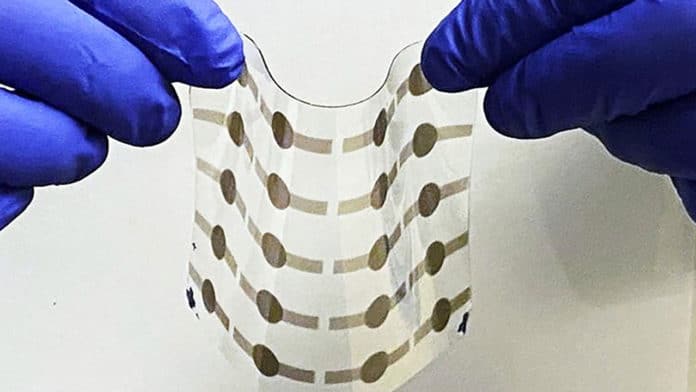Among many materials, dielectric elastomers (DE)—lightweight materials with high elastic energy density—have been of particular interest to be used in artificial muscles. That’s because they have optimal flexibility and toughness. Plus, they can be used as actuators, enabling machines to operate by transforming electric energy into mechanical work.
Most dielectric elastomers are made of silicone or acrylic; however, both have disadvantages. Traditional acrylic DEs lack flexibility and can only produce significant actuation strain after pre-stretching. Silicones can’t take a severe strain, but they are simpler to create.
Using commercially available chemicals and an ultraviolet (UV) light curing process, the UCLA-led research team created an improved acrylic-based material that is more pliable, tunable, and simpler to scale without losing strength and endurance.
The researchers changed the crosslinking between polymer chains to make the elastomers softer and more flexible. Additionally, acrylic acid facilitates more hydrogen bonds, making the material more pliable. They then sandwiched the resulting thin, processable, high-performance dielectric elastomer film, or PHDE, between two electrodes to convert electrical energy into motion as an actuator.
Each PHDE film is as thin and light as a piece of human hair, about 35 micrometers in thickness. Stacking multiple layers together forms a miniature electric motor that can act like muscle tissue and produce enough energy to power motion for small robots or sensors. The researchers have made stacks of PHDE films varying from four to 50 layers.
Qibing Pei, a professor of materials science and engineering at the UCLA Samueli School of Engineering and the corresponding author of a study, said, “This flexible, versatile, and efficient actuator could open the gates for artificial muscles in new generations of robots, or in sensors and wearable tech that can more accurately mimic or even improve humanlike motion and capabilities.”
“Artificial muscles fitted with PHDE actuators can generate more megapascals of force than biological muscles, and they also demonstrate three to 10 times more flexible than natural muscles.”
Multilayered soft films are manufactured via a ‘wet’ process that involves depositing and curing liquid resin. However, that procedure might produce uneven layers, making an actuator work poorly. Because of this, many actuators have only had success with single-layer DE films thus far.
In this study, researchers used a ‘dry’ process, which involves layering films using a blade and then UV-cured to harden. This creates uniform layers. It also increases the actuator’s energy output so that the device can support more complex movements.
Other advantages of this process include manufacturing new soft actuators capable of bending to jump, like spider legs, or winding up and spinning.
The researchers also demonstrated the PHDE actuator’s ability to toss a pea-sized ball 20 times heavier than the PHDE films. The actuator can also expand and contract like a diaphragm when a voltage is switched on and off, showing how artificial muscles could be used in the future.
Pei noted, “The advance could lead to soft robots with improved mobility and endurance, and new wearable and haptic technologies with a sense of touch. The manufacturing process could also be applied to other soft thin-film materials for applications including microfluidic technologies, tissue engineering or microfabrication.”
Journal Reference:
- Ye Shi et al., A processable, high-performance dielectric elastomer and multilayering process, Science (2022). DOI: 10.1126/science.abn0099
